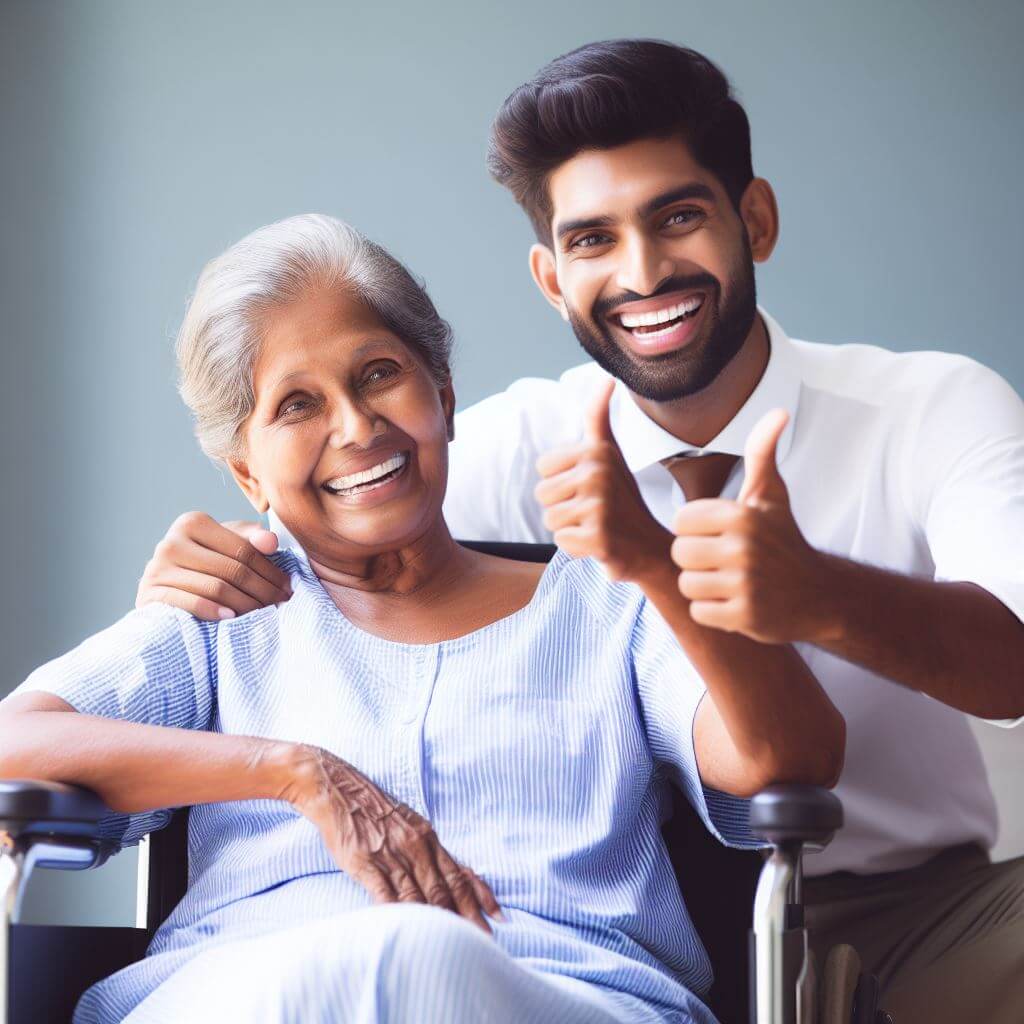In Sri Lanka, the quality of the healthcare services that are accessible for the people in rural areas is lower than that of people in urban areas. This was proved after exploring the clinicians, hospital staff, and the general public from rural and urban areas. This disparity in Sri Lanka has been caused by different factors, including public transportation and infrastructure facilities. Although this is a common problem in several countries, the people in developed countries don’t often face these problems. They have many comfortable, high-quality healthcare facilities for fewer charges and easy access. But, how is it possible to establish those city hospitals in rural areas? So, it is widely recognized that implementing an active telemedicine service in Sri Lanka is the most effective solution to the problem.
Telemedicine will give rural people equal access to available resources open to patients in urban areas without needing travel. However, implementing a successful telemedicine service can be a complex socio-technical problem based on different criteria.

Previously, we explained why Sri Lanka needs an innovative telehealth service right now. There you can understand how the healthcare facilities in Sri Lanka will be upgraded than now with telemedicine.
What are the problems faced by a telemedicine service provider?
We can determine the following calculations based on different researches and data circulating by the government, WHO, UNICEF, and SAARC. According to those we have identified, the explained problems will arise while implementing and delivering a successful telemedicine service in Sri Lanka.
Computer Literacy rate in Sri Lanka
A person (ages 5-69) is considered computer literate if they can use their computer. For example, even if a 5-year-old can play a computer game, they are considered a person with computer literacy.
According to the Computer Literacy Statistics – 2020 (Annual) conducted by the Department of Census and Statistics (DCS) to cater for the data needs to calculate, the computer literacy overall rate is about 32.3% of the total population which is low according to us.
However, the survey further tells us that only one out of 3 persons between the ages of 5 and 69 are computer literate.
These calculations vary from region to region, depending on whether it is a rural area or an urban area. The average analysis also varies according to the people’s economy in different regions.
So, when the literacy rate is too low, it is hard to access the telemedicine software, applications, or any other feature. This problem should be fixed by implementing an active telemedicine service in Sri Lanka. If the problem can’t be fixed, it needs an alternative solution that replaces the feature and functions better.
Digital Literacy rate in Sri Lanka
Besides computer literacy, the digital literacy rate is the other essential for accessing telemedicine. If a person (ages 5-69) can use a smart mobile phone, laptop, computer, or tablet is considered digitally literate. In Sri Lanka, this is about one out of two people. If a successful telehealthcare service needs to be implemented people the developers should have a proper solution for the problem. Also, it can be an alternative.
Device Ownership
Sri Lanka doesn’t invent mobile phones, computers, or laptops. So, they have to import them from the other countries. Since the best brands like Samsung and Apple are mostly imported here due to the high demand from the small number of wealthy people in the country, their prices are also high. Sometimes a middle-class person cannot afford a mobile phone due to the higher rate.

Our previous blog described how is the current situation in Sri Lanka due to the dollar crisis. So, in the future affording a mobile device will not be easy. So, if someone needs a device upgrade to reach the new telemedicine app’s requirements, it will not be practical for the people in rural areas who suffer from poverty.
According to surveys, if a home has a desktop or laptop computer, that home is considered a computer-owned home. In 2020 7.6% of houses owned desktop computers, while 22.2% of houses owned a desktop computer or a laptop. Of that, 22.2% of people, 37.1% were in urban areas, 20.1% were rural, and 3.8% were estate people.
As a computer is not essential to access telemedicine owning a mobile device is also enough. 45-50%, which means one out of two people owns mobile phones in Sri Lanka. However, this value is low when considering other countries. But, this is a considerable value that shows green marks for implementing an effective telemedicine service in Sri Lanka.
So, we can explore a perfect telemedicine application with solutions to the above issues. When we are going through the problems via analysis and research, we have found the following solutions will be perfect.
Solutions to the problems that can arise when implementing an active telemedicine service in Sri Lanka
Every problem has a solution. So, the above problems indeed. As the innovative generation in Sri Lanka, youth, adults, and the younger generations can easily find answers and solutions to the above problems to healthcare upgrades by establishing telemedicine. In the relevant research and case studies, the following solutions have been identified as the best solutions. Explore our solutions for better remote access to healthcare in the 21st century.
Creating a user-friendly application
A user-friendly application with easy access can solve 2 major problems mentioned above—the effects of computer literacy and digital literacy. If there is an application that anyone can easily access, it will be more helpful to digitally illiterate people in urban, rural, and estates.
Developing a cross-platform application
A cross-platform application enables easy access to the telemedicine platform from any device. Whether IOS, Android, or any other else. It will be easier if we can develop a web-based application that makes it even easy to use via any device with internet access.
Adding a guardian profile
During the covid-19 pandemic period, the learning system changed to online from typical physical education in Sri Lanka. Most parents and children, even in urban areas, could not set up their mobile phones or computers with the necessary software. They managed to find a person who knows about setting up those. Here, the guardian profile acts as a person who knows how to set up, schedule appointments, download prescriptions, order online, and make online payments. The owner of the guardian profile should have the ability easily manage these things. The patient can quickly answer the application’s call and join the session.
Does Deedmed Lives solve the problems?
So, mainly there should be an application with the above solutions to integrate an effective, active telemedicine service in Sri Lanka that drives people by interest. Deedmed lives is built with those features to give the best experience. Adding a guardian profile is the best and the unique feature our team implemented.
Get in touch with Deedmed blogs to acknowledge our future updates and news. We will always be with you!




 EXEVE
EXEVE